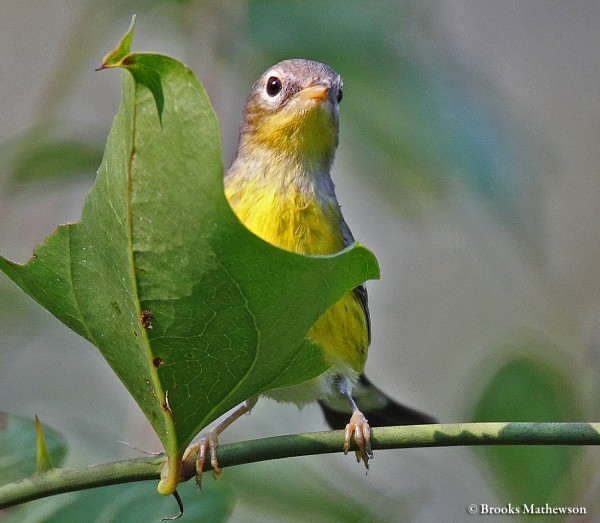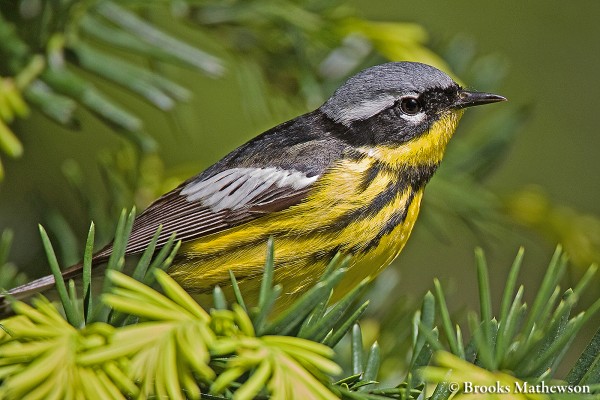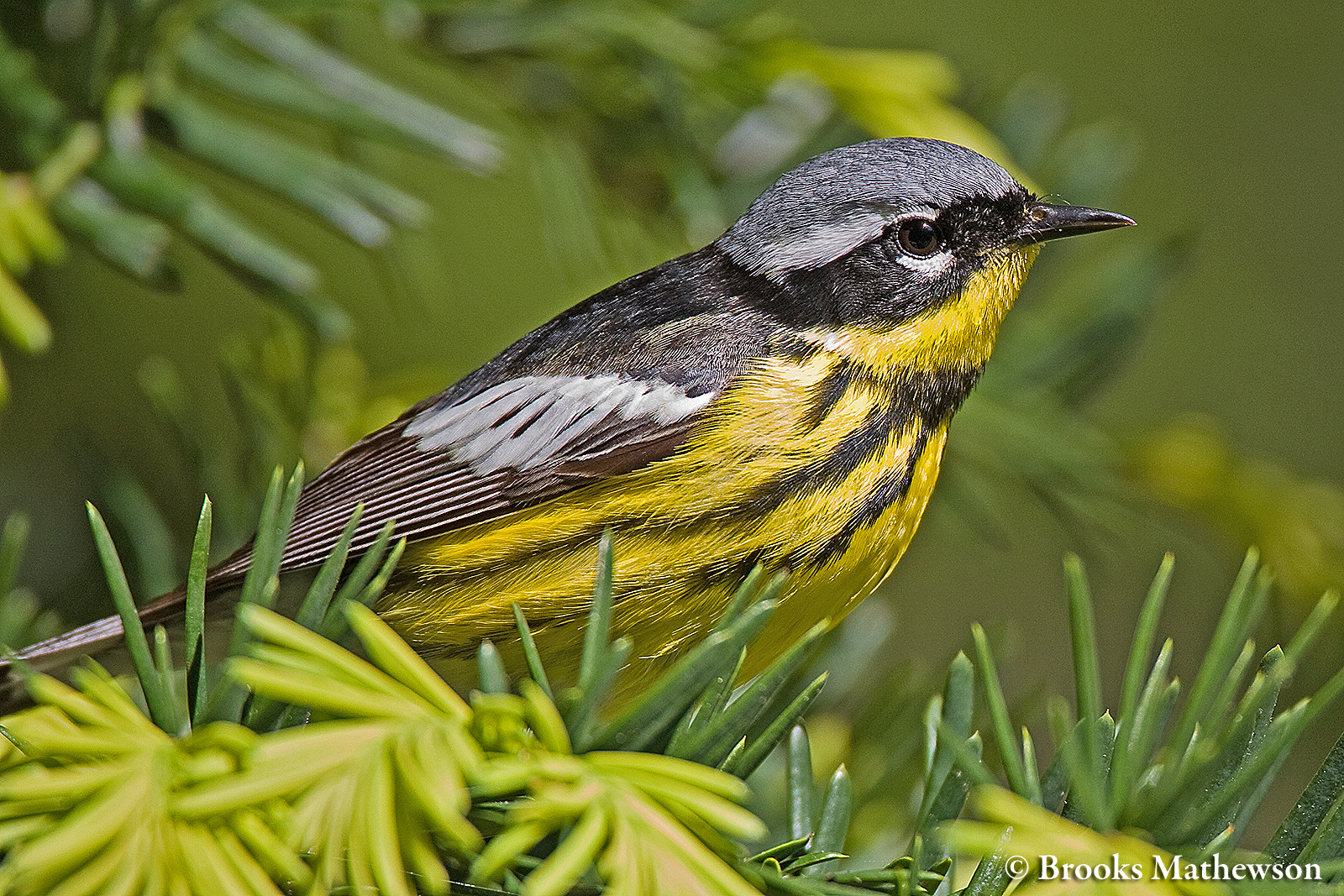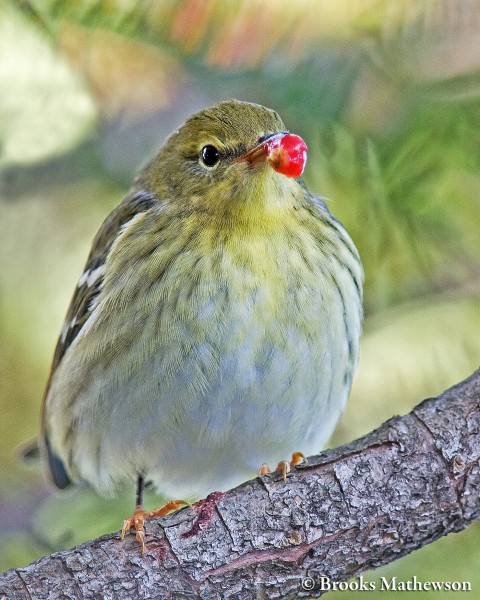
Every autumn our coastal woodlands become flooded with small songbirds migrating south from their breeding habitat throughout New England and Canada. A large percentage of these birds are warblers from the Family Parulidae. Most of them look much different in their non-breeding plumages of the fall than they do in their breeding plumage. This identification challenge prompted the famous ornithologist Roger Tory Petersen to name the section devoted to these birds in his seminal A Field Guide to the Birds – “The Confusing Fall Warblers.”
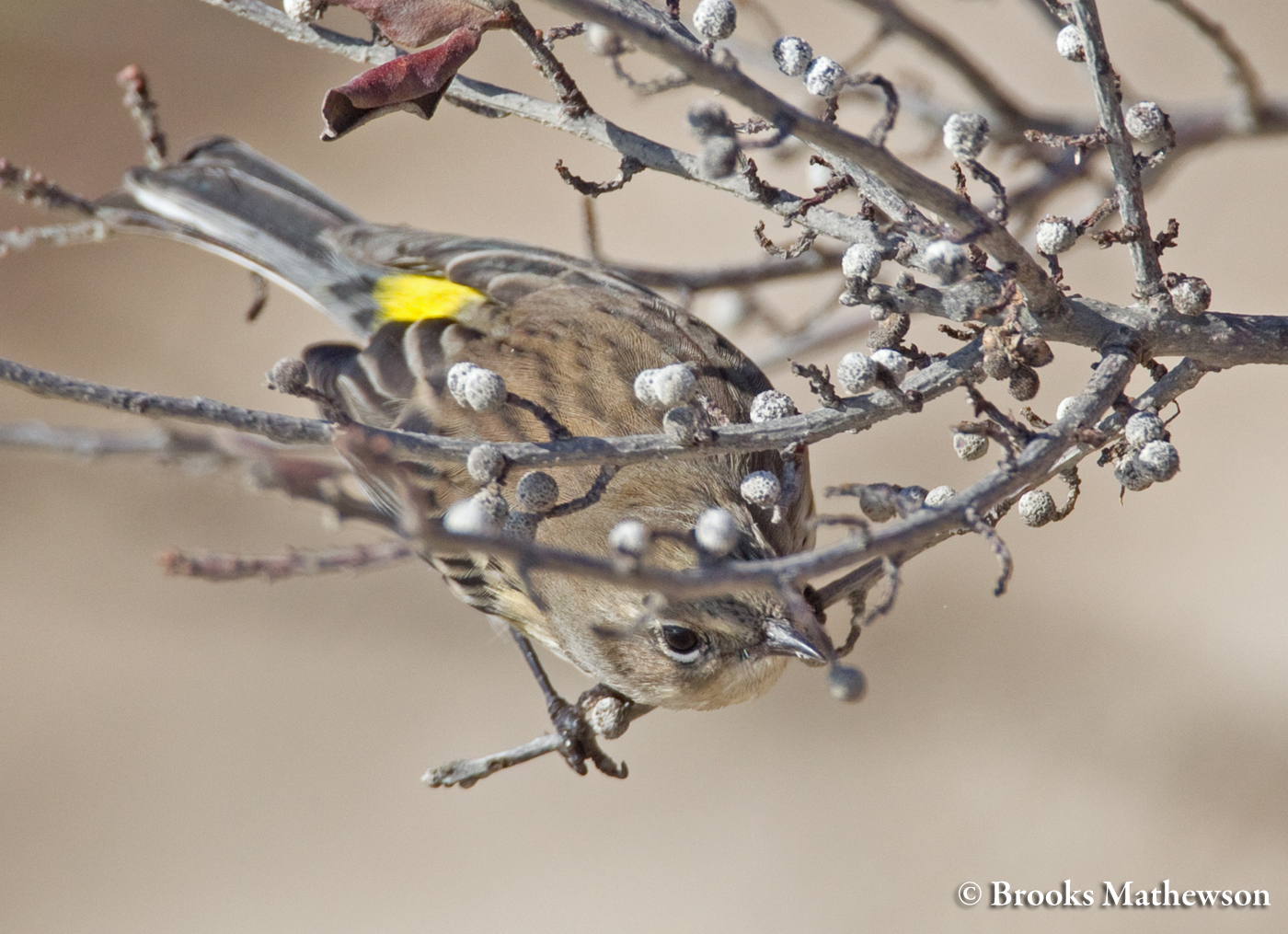
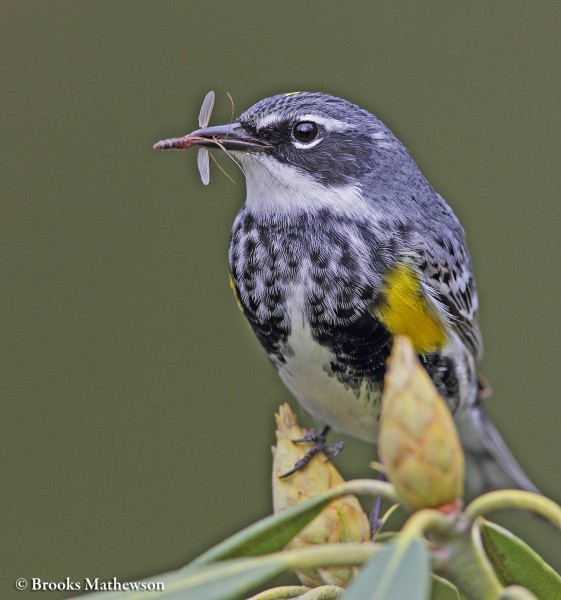
This may be why it is not uncommon to see birders wandering around in a haze this time of year as if they just hitched a ride with a Bob Marley cover band on their way to the Ocean Mist. However, with a just little bit of insight the fog can be lifted. One of the keys is to focus on body shape and bill shape, which although subtle are different between genera. While plumages change from season to season, these characteristics do not.

Another trick is that 75% of these birds are Yellow-rumped Warblers. Overall these birds are somewhat drab in non-breeding plumage with splashes of yellow on their sides as well as on their rumps. Uniquely adapted to survive on dry wax myrtle and bay berries, Yellow-rumps stay in RI throughout the fall and winter while most other warblers need to migrate to central and South America in search of food as insects disappear from the north. I have seen Yellow-rumped Warblers along the dunes at Moonstone Beach in the middle of February.
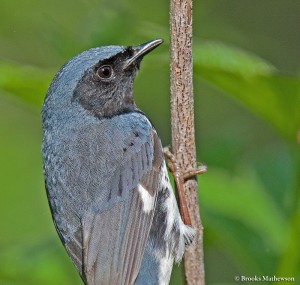
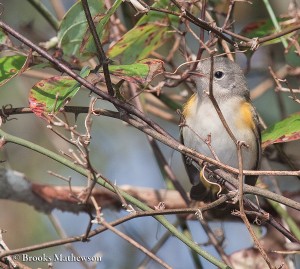
If you’ve eliminated Yellow-rumped Warbler the next most likely bird flitting about the falling leaves is the Blackpoll Warbler . These birds stage in large numbers along the coast storing up energy in the form of fat reserves with a goal of doubling their body weight. One study of a Black-throated Blue Warbler preparing for spring migration found these birds eat the human equivalent of 20 cheeseburgers a day for a month. A similar massive eating effort enables Blackpoll Warblers to fly back to the rain forests of South America in one non-stop journey that can take up to 90 hours and reach flying altitudes of up to 20,000 feet. Remember this is a bird that weighs 13 grams or a half an ounce. This would be like a 165 pound man flying 18,480,000 miles or back and forth to the moon 36 times. There is no way I could do that, even if I ate 20 cheeseburgers a day for a month. Maybe you could, but not me.
The real fun begins when we see birds that are not one of these two common species. One of the tricks to finding these less common species is to keep an eye on the weather. Migratory birds generally will time their flights so that they are aided by the prevailing winds. So larger number of fall migrants can often be found on days when a high pressure cold front with winds from the north passes through. This is when we are more likely to see birds such as the Palm Warbler, Northern Parula, American Redstart, Common Yellowthroat, Magnolia Warbler, Nashville Warbler, Wilson’s Warbler, Black-and-white Warbler, Chestnut-sided Warbler or Black-throated Green Warbler.
